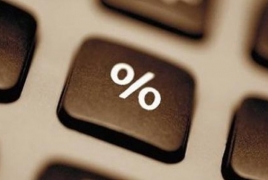
Armenia's GDP growth slowed to 3.0 percent in 2015 in light of the weakening external conditions, the World Bank said in its latest monthly economic update.
Despite the reduced exports to and remittances from Russia, growth was stronger than expected due to one-off factors including a good agriculture harvest and the opening of a new copper mine. In 2016, growth is projected to remain sluggish at 2.5 percent due to continued recession in Russia and structural weaknesses. The economic activity index increased to 5.5 percent in January 2016 supported by the tradable sector. The relative boost in economic activity, including the agri-export expansion, is explained by the base effect in January 2015 and needs to be maintained for a few more months before suggesting any adjustments in projections.
The government introduced a fiscal stimulus in 2015 to support weakening economic activity, widening the fiscal deficit. The stimulus consisted of a combination of tax relief and increased spending in infrastructure investment, social protection and subsidized lending. The resulting fiscal deficit, of 4 percent of GDP (compared with 2 percent in 2014), was financed mainly by external borrowing, including Eurobonds and budget support from ACF/EEU and WB, leading to a build-up of government debt to 48 percent of GDP.
The approved 2016 Budget includes revenue-raising measures and modest expenditure cuts to accommodate fiscal consolidation. Some of the tax policy changes pertaining to excise tax base and rate increases introduced in the fall of 2015 will positively affect the revenue collection however the overall tax to GDP ratio is expected to decline by 1 percentage point.
Monetary policy was tight during the first half of 2015 but eased in the latter half, as inflationary pressures receded. A good agriculture harvest, lower international food prices and weak domestic demand resulted in the average annual inflation of minus 0.1 percent in 2015 – well below the CBA’s target range of 4±1.5 percent inflation.
The Central Bank lowered the policy rate from 10.25 percent at the beginning of the year to 8.75 percent by the end of 2015. Inflation remained muted in January 2016 with 0.4 percent reduction of the over consumer price index helped by about 4 percent decline in food prices.
Overall the banking sector remained sound in 2015, but total lending declined by 3.1 percent, the reports said, adding that the current account position improved due to the sharp contraction in imports.

